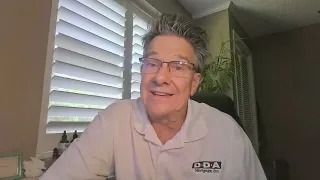Call (727) 784-5555
Retirement at 65 has been a longstanding norm for U.S. workers, but older investors believe that not only is such an outcome unfeasible, but they’re likely to face more challenging retirements than their parents or grandparents.
This is according to recently released survey results from Nationwide, with a respondent pool that included 518 financial advisers and professionals, as well as 2,346 investors ages 18 and older with investable assets of $10,000 or more. The survey follows other ongoing research into the baby boomer generation as it approaches “Peak 65.”
The investors included a subset of 391 “pre-retirees“ between the ages of 55 and 65 who are not retired, along with subsets of 346 single women and 726 married women, Nationwide explained of its methodology.
Seven in 10 of the pre-retiree investors said that the norm of retirement at age 65 “doesn’t apply to them,” while 67% of this cohort also believe that their own retirement challenges will outweigh those of preceding generations.
Stress is changing the perceptions of retired life, especially for those who are closest to retirement, the results suggest.
“Four in 10 (41%) pre-retirees said they would continue working in retirement to supplement their income out of necessity, and more than a quarter (27%) plan to live frugally to fund their retirement goals,” the results explained. “What’s more, pre-retirees say their plans to retire have changed over the last 12 months, with 22% expecting to retire later than planned.”
Eric Henderson, president of Nationwide Annuity, said that previous generations who observed a “smooth transition” into retired life do not appear to be translating to the current generation making the same move.
“Today’s investors are having a tougher time picturing that for themselves as they grapple with inflation and concerns about running out of money in retirement,” Henderson said in a statement.
The result is that more pre-retirees are changing their spending habits and aiming to live more inexpensively. Forty-two percent of the surveyed pre-retiree cohort agreed with the idea that managing day-to-day expenses has grown more challenging due to rising costs of living, while 27% attributed inflation as the key reason they are saving less for retirement today.
Fifty-seven percent of respondents said that inflation “poses the most immediate challenge to their retirement portfolio over the next 12 months,” while 41% said they were avoiding unnecessary expenses like vacations and leisure shopping.
Confidence in the U.S. Social Security program has also fallen, the survey found.
“Lack of confidence in the viability of Social Security upon retirement (38%) is a significant factor influencing pre-retirees to rethink or redefine their retirement planning strategies,” the results explained. “Over two-fifths (43%) are not counting on Social Security benefits as much as previously expected, and more than a quarter (27%) expect to receive less in benefits than previously anticipated.”
The survey was conducted by The Harris Poll on behalf of Nationwide in January 2024.
Have A Question?
Use the form below and we will give your our expert answers!
Reverse Mortgage Ask A Question
We will get back to you as soon as possible.
Please try again later.
Start Your Loan
with DDA todayYour local Mortgage Broker
Mortgage Broker Largo See our Reviews
Looking for more details? Listen to our extended podcast!
Check out our other helpful videos to learn more about credit and residential mortgages.





